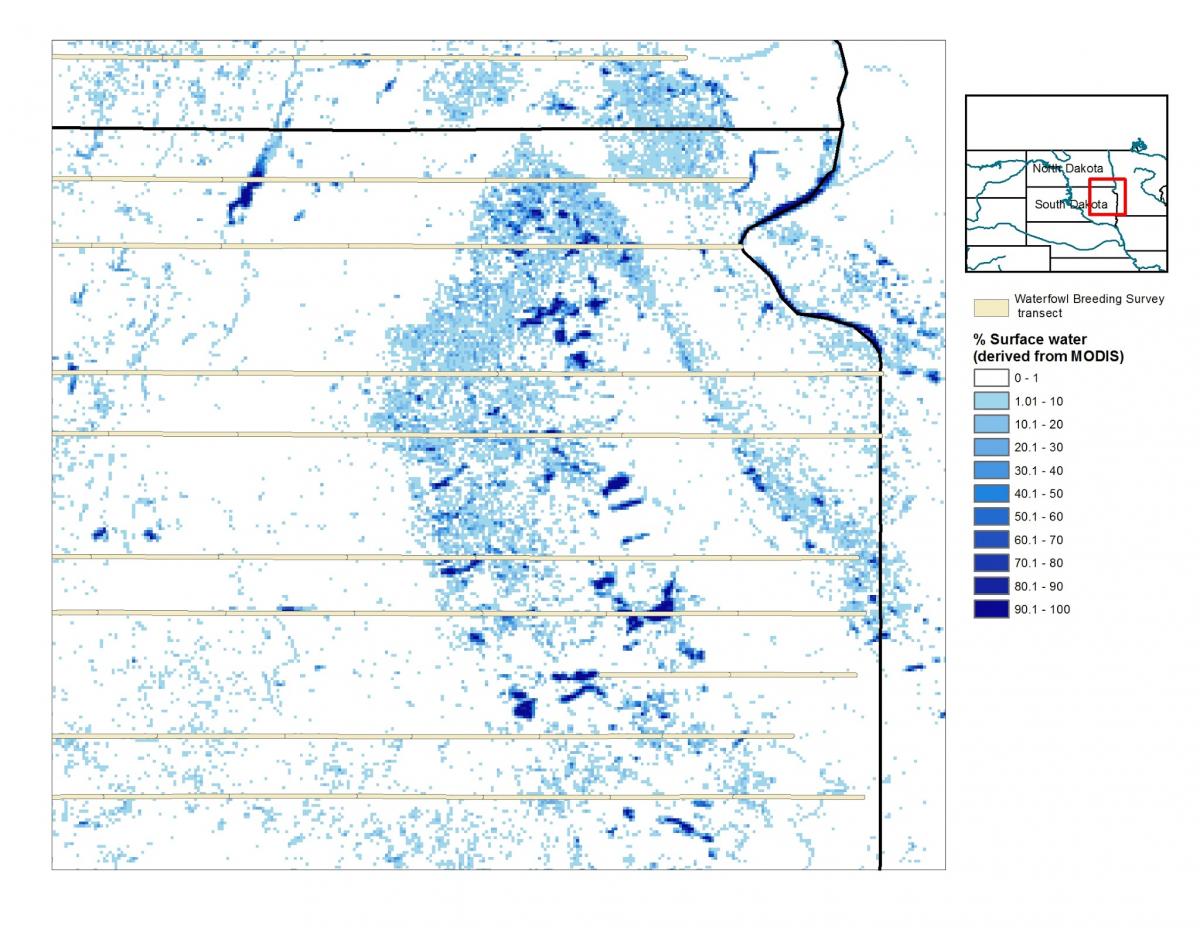The Migratory Bird Program within USFWS is currently undertaking multiple research projects to evaluate the effects of climate change on migratory bird populations in North America. The goal is to adapt monitoring programs and population models that inform harvest management of waterfowl species in the face of climate change. National Environmental Prediction Center North American Regional Reanalysis (NCEP/NARR) climate data and percent surface water products derived from the Moderate Resolution Imaging Spectroradiometer (MODIS) (Yellowstone Ecological Research Center COASTERdata.net) provide information on historical trends in precipitation, temperature, and waterfowl habitat conditions in the Canadian and US prairies. These data, along with waterfowl population data from the long-term Waterfowl Breeding Population and Habitat Survey, are used to model spatial patterns in density dependence and waterfowl population response to changing habitat conditions. Incorporating climate change predictions into these models, in the form of temperature and precipitation trends, allows us to simulate how population distributions and dynamics may shift to and identify strategies to adapt monitoring efforts and harvest management models in order to better manage waterfowl populations in the face of a changing climate.
Percent surface water, May 2003 (derived from MODIS, Yellowstone Ecological Research Center), in the prairie coteau region of North and South Dakota, an important waterfowl nesting region in the U.S. prairies. Tan lines represent waterfowl aerial survey transects.


